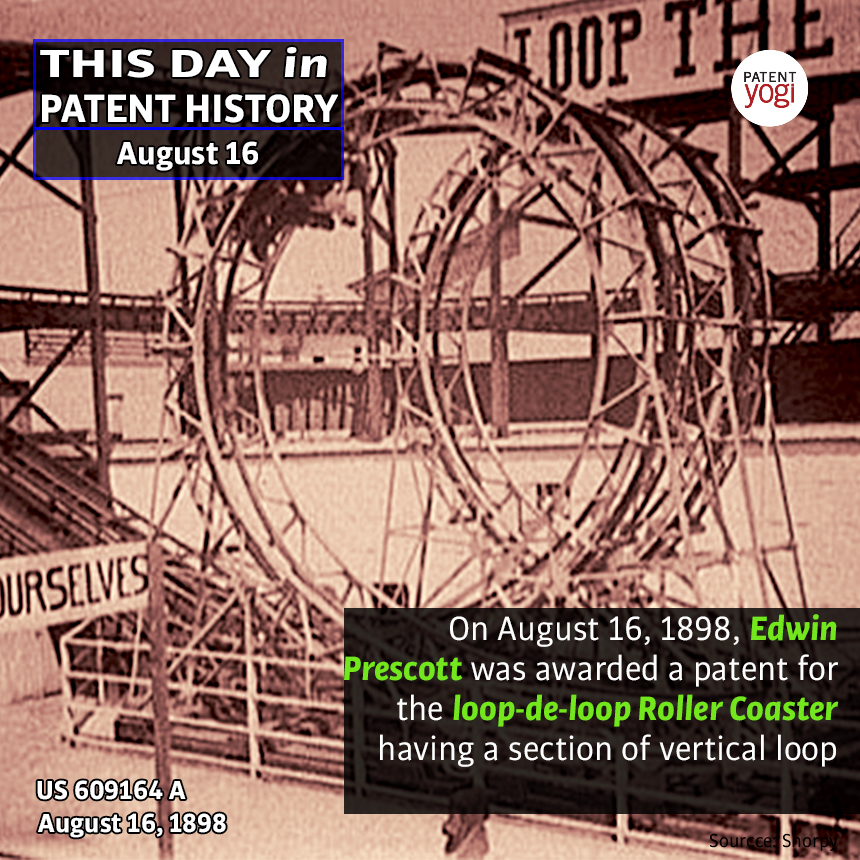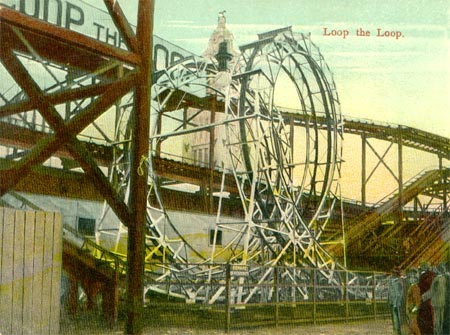
On August 16, 1898, Edwin Prescott was awarded a patent for the loop-de-loop Roller Coaster having a section of vertical loop.
Prescott operated his dual-tracked steel roller coaster on Coney Island, New York. However more people wanted to watch the attraction, rather than ride.
Loop the Loop was an improvement in terms of ride comfort. This was primarily because Loop the Loop incorporated a more elliptical design, thereby reducing the g-forces. Loop the Loop also had rubber wheels to improve the ride comfort. Nevertheless, many riders still experienced discomfort.

Prescott described the operation as “due to centrifugal action, the contents of the car remains securely in place and the car follows the track.” For safety, he provided additional wheels on the opposite side of the main rail with their own safety track to prevent the car from leaving the main track, even if the car was inverted while travelling with insufficient centrifugal force. An elevator chain moved the car from a passenger-station on the ground, up to a much higher section of track as the starting point.
No more roller coasters with vertical loops were built until 1976 when The New Revolution opened at Six Flags Magic Mountain. Its success depended largely on its clothoid-based (rather than circular) loop. The loop became a phenomenon, and many parks hastened to build roller coasters featuring them. The latest innovation in roller coasters is Virtual Reality Roller Coaster.
Now, companies like Airbus are making aircraft which have slight path of roller coasters.
Publication number: US609164 A
Patent Title: Roller-coaster
Publication type: Grant

Publication date: 16 Aug 1898
Filing date: 11 Oct 1897
Inventors: Edwin Prescott
